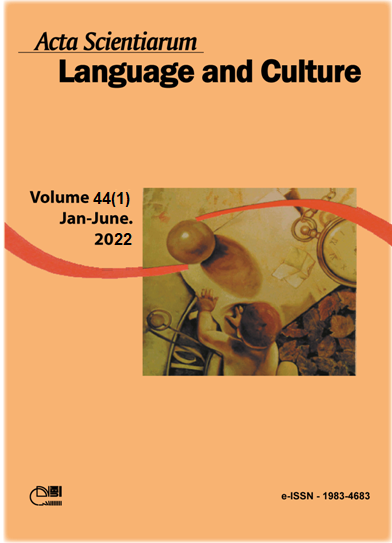O teatro das paixões em Um copo de cólera, de Raduan Nassar
Resumo
Um copo de cólera, narrativa de Raduan Nassar, foi publicada em 1978. A novela, como costuma ser caracterizada pela crítica, é organizada em sete capítulos, dos quais seis são curtíssimos (variando entre 3 e 5 páginas) e apenas um bastante grande (exatas 53 páginas), no qual se concentra o clímax da história. O capítulo seis, denominado ‘O esporro’, é o momento central da novela, no qual os protagonistas amantes rompem com a teatral tranquilidade nos capítulos pregressos, fazendo sugir discursos previamente construídos do ponto de vista cultural sobre as posições masculinas e femininas. Neste artigo, de cunho bibliográfico-analítico, objetivamos refletir sobre a construção dessas personagens, destacando seus discursos, papéis e as relações de poder estabelecidas entre elas. Há, na novela, uma disposição masculina ensaiada e moldada por certa orientação cultural que predispõe o homem como elemento racional, reafirmando a mulher como seu contrário. Nassar explora as oposições e os estereótipos associados às personagens, condicionadas, a princípio, a papéis dotados de uma previsibilidade desconcertante, dada a teatralidade gestual. A organização textual da narrativa aponta para o embate de gêneros, e também para a inversão de poderes e posições entre homem e mulher, sugerindo, em seu último capítulo, uma espécie de derrota emocional masculina diante da racionalidade do discurso feminino
Downloads
DECLARAÇÃO DE ORIGINALIDADE E DIREITOS AUTORAIS
Declaro que o presente artigo é original, não tendo sido submetido à publicação em qualquer outro periódico nacional ou internacional, quer seja em parte ou em sua totalidade.
Os direitos autorais pertencem exclusivamente aos autores. Os direitos de licenciamento utilizados pelo periódico é a licença Creative Commons Attribution 4.0 (CC BY 4.0): são permitidos o acompartilhamento (cópia e distribuição do material em qualqer meio ou formato) e adaptação (remix, transformação e criação de material a partir do conteúdo assim licenciado para quaisquer fins, inclusive comerciais.
Recomenda-se a leitura desse link para maiores informações sobre o tema: fornecimento de créditos e referências de forma correta, entre outros detalhes cruciais para uso adequado do material licenciado.




















6.png)









